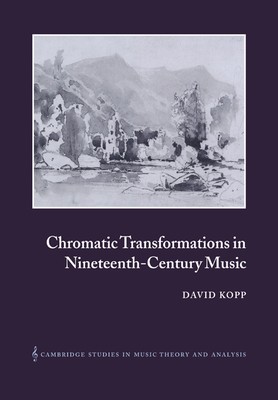
- We will send in 10–14 business days.
- Author: David Kopp
- Publisher: Cambridge University Press
- ISBN-10: 0521028493
- ISBN-13: 9780521028493
- Format: 17 x 24.4 x 1.6 cm, minkšti viršeliai
- Language: English
- SAVE -10% with code: EXTRA
Reviews
Description
David Kopp's book develops a model of chromatic chord relations in nineteenth-century music by composers such as Schubert, Beethoven, Chopin, Schumann, and Brahms. The emphasis is on explaining chromatic third relations and the pivotal role they play in theory and practice. Drawing on tenets of nineteenth-century harmonic theory, contemporary transformation theory, and the author's own approach, the book presents a clear and elegant means for characterizing commonly acknowledged but loosely defined elements of chromatic harmony. The historical and theoretical argument is supplemented by many analytic examples.
EXTRA 10 % discount with code: EXTRA
The promotion ends in 21d.03:16:23
The discount code is valid when purchasing from 10 €. Discounts do not stack.
- Author: David Kopp
- Publisher: Cambridge University Press
- ISBN-10: 0521028493
- ISBN-13: 9780521028493
- Format: 17 x 24.4 x 1.6 cm, minkšti viršeliai
- Language: English English
David Kopp's book develops a model of chromatic chord relations in nineteenth-century music by composers such as Schubert, Beethoven, Chopin, Schumann, and Brahms. The emphasis is on explaining chromatic third relations and the pivotal role they play in theory and practice. Drawing on tenets of nineteenth-century harmonic theory, contemporary transformation theory, and the author's own approach, the book presents a clear and elegant means for characterizing commonly acknowledged but loosely defined elements of chromatic harmony. The historical and theoretical argument is supplemented by many analytic examples.


Reviews